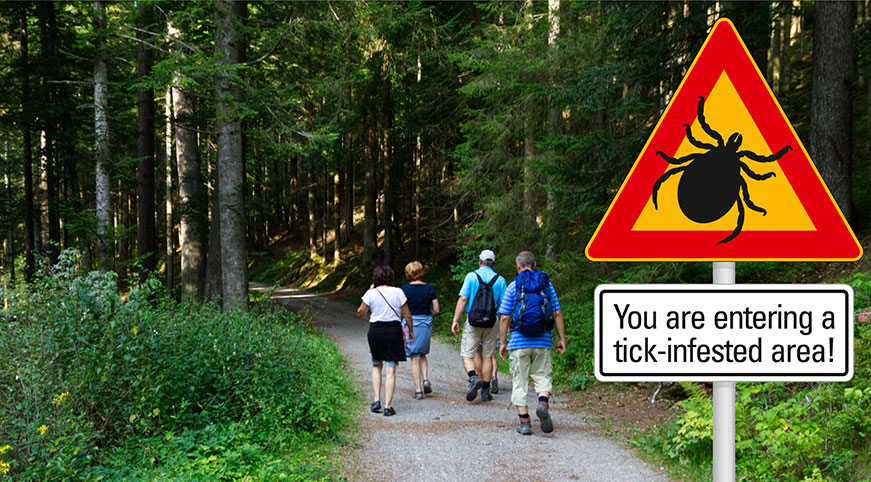Posted by Dr. Eugene Park
With summer fast approaching, everyone is making plans to camp and hike. You are all set to step out and enjoy the warm weather, and so are the tiny summer pests like ticks. Tickborne diseases are growing health concern in the United States during summer, and it is important to take steps to prevent these diseases.
What are ticks?
Ticks are tiny spiderlike creatures—hiding among grass, bushes, and trees—that bite to attach themselves onto the skin and feed on blood. Tick bites may resemble other bug bites, such as from ants or other insects. Often, a localized inflammatory reaction will cause redness at the site of the bite with mild swelling and itchiness. Because ticks inject an anesthetic chemical when they bite, most bites are unnoticed by their host. Ticks attach themselves to continue feeding on blood.
What are tickborne diseases?
While most tick bites are harmless, some ticks are known to cause serious disease, occasionally fatal. The most common tick-borne illness in the United States is Lyme disease. Lyme disease is most prevalent in the eastern United States. According to Centers for Disease Control and Prevention, around 300,000 people are diagnosed with Lyme disease each year in the United States1. Classically, a ring-like red rash, also known as ‘erythema migrans’, may develop with early Lyme Disease. However, this symptom is not prevalent in all cases. Other tickborne diseases include Anaplasmosis/Ehrlichiosis, Spotted Fever Rickettsiosis, Babesiosis, Tularemia, and Powassan virus2.
What are the symptoms of tickborne diseases?
Lyme disease, like many other tick-borne illnesses, may present with unclear symptoms such as muscle aches, fevers, fatigue, and joint pains. Tick bite symptoms often occur between the day of the bite to 3 weeks.
How are tick bites and tickborne diseases treated?
Check your body thoroughly, especially after traveling outdoors in tick-infested areas, as soon as you are indoors. Embedded ticks should be promptly removed with fine-tipped tweezers by grasping as close to the skin as possible and pulling steadily outward. The bite area should be disinfected with rubbing alcohol or soap and water.
If you suspect a tick bite, and you develop concerning symptoms, it is recommended you seek prompt medical evaluation. While testing is available for certain tickborne illnesses, most tickborne illnesses respond effectively to early antibiotic treatment. That being said, antibiotics are not routinely recommended after a tick bite to prevent infection in patients without concerning symptoms.
- Be aware of tick-infested areas when going outdoors
- Use Environmental Protection Agency (EPA)-registered insect repellents before entering tick-infested areas
- Wear light colored clothing to easily identify ticks on the body
- Check yourself and your clothing for ticks, as soon as you are indoors
- Take a shower, once indoors, to reduce the risk of tickborne diseases
Source: Centers for Disease Control and Prevention3
1Centers for Disease Control and Prevention. How many people get Lyme disease? Retrieved from https://www.cdc.gov/lyme/stats/humancases.html
2Centers for Disease Control and Prevention. Tickborne Disease Surveillance Data Summary. Retrieved from https://www.cdc.gov/ticks/data-summary/index.html
3Centers for Disease Control and Prevention. Stop Ticks to Avoid Lyme and Other Tickborne Diseases. Retrieved from https://www.cdc.gov/features/stopticks/index.html
 ENGLISH
ENGLISH KOREAN
KOREAN Spanish
Spanish RUSSIAN
RUSSIAN Armenian
Armenian FILIPINO
FILIPINO Chinese (Simplified)
Chinese (Simplified) Chinese (Traditional)
Chinese (Traditional)

최신댓글